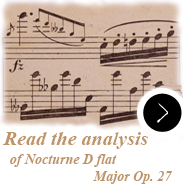Abbreviations-symbols that serve to mark sources for particular works are created according to certain rules, with the intention to embody certain useful information in each abbreviation. All Chopin sources are generally divided into two main categories: manuscripts and editions. We describe them with conventional names, in their abbreviated forms, indicating source type (e.g. autograph, English edition, etc.):
- Hand-written sources include Chopin’s autographs (A), copies (C) as well as manuscripts other than copies or manuscripts of uncertain status (M);
- Editions are marked with two-letter abbreviations XE, where X defines the language area in which the editor’s firm was seated (F, G, E, I, P for the French, German, English, Italian and Polish edition, respectively).
Further letters or digits added to those basic symbols identify particular sources and give more details about their position on the chronological list of sources of a given type and about other characteristic features:
- Numbering of sources of the same type (e.g. autographs or editions and their print runs by the same publishing firm) always reflects their chronological order and relations between texts. For instance, marking an autograph as A1 conveys the following pieces of information: Chopin wrote at least two autographs of that work, of which A1 was written first. Lack of any number means that it was impossible to establish such relations or chronology.
- As described above, the subsequent impressions or reprints of the first editions are numbered with arabic numerals. If they show no difference in a particular passage, then for the sake of simplicity we use the symbol of the edition without the precising numbers, e.g. with GE1, GE2 & GE3 being three different versions of the German edition we write simply GE instead of GE1 (→GE2→GE3).
- Roman numerals are used for numbering sources that contain earlier versions of the work clearly differing from the final redaction; these are mainly autographs or copies. For instance, AI stands for the autograph of an earlier redaction of a given work.
- Small letters point to the type of source, e.g. As is a sketch autograph.
- Capital letters in abbreviations stand for persons connected with a given source, e.g. FED is a teaching copy (of the French edition) belonging to Miss O’Méara, later Mme Dubois, FC is a copy made by Fontana (X, Y, Z stand for unidentified persons), and AK –autograph of one of the waltzes presented to Mademoiselle de Krudner.
Putting a symbol in square brackets means that the source itself is lost, and its existence is either confirmed by available historical information or provides an explanation for the observed relations between the extant sources; for instance, [FC1] and [FC2] are two Fontana’s copies of the Tarantelle Op. 43 that have not been found to date, but we know about their existence from Chopin’s correspondence.
The arrow sign (→) between symbols of sources means a dependence of sources, e.g. A (→FE) should read as the autograph and the French edition based on it, and A (→FC,FE) as the autograph and both Fontana’s copy and the French edition based on it. Possible are also more complex schemes e.g. A (→FC→GE, →FE→EE1→EE2) means that based on the autograph were both Fontana’s copy and the French edition which in turn underlay respectively the German edition and the first English edition, the latter forming a foundation for the second impression of the English edition. Another example: FE1 (→GE,FE2→EE) means that the German edition was based on a copy of the French edition with no last amendments included, and the English edition already on its corrected version.

